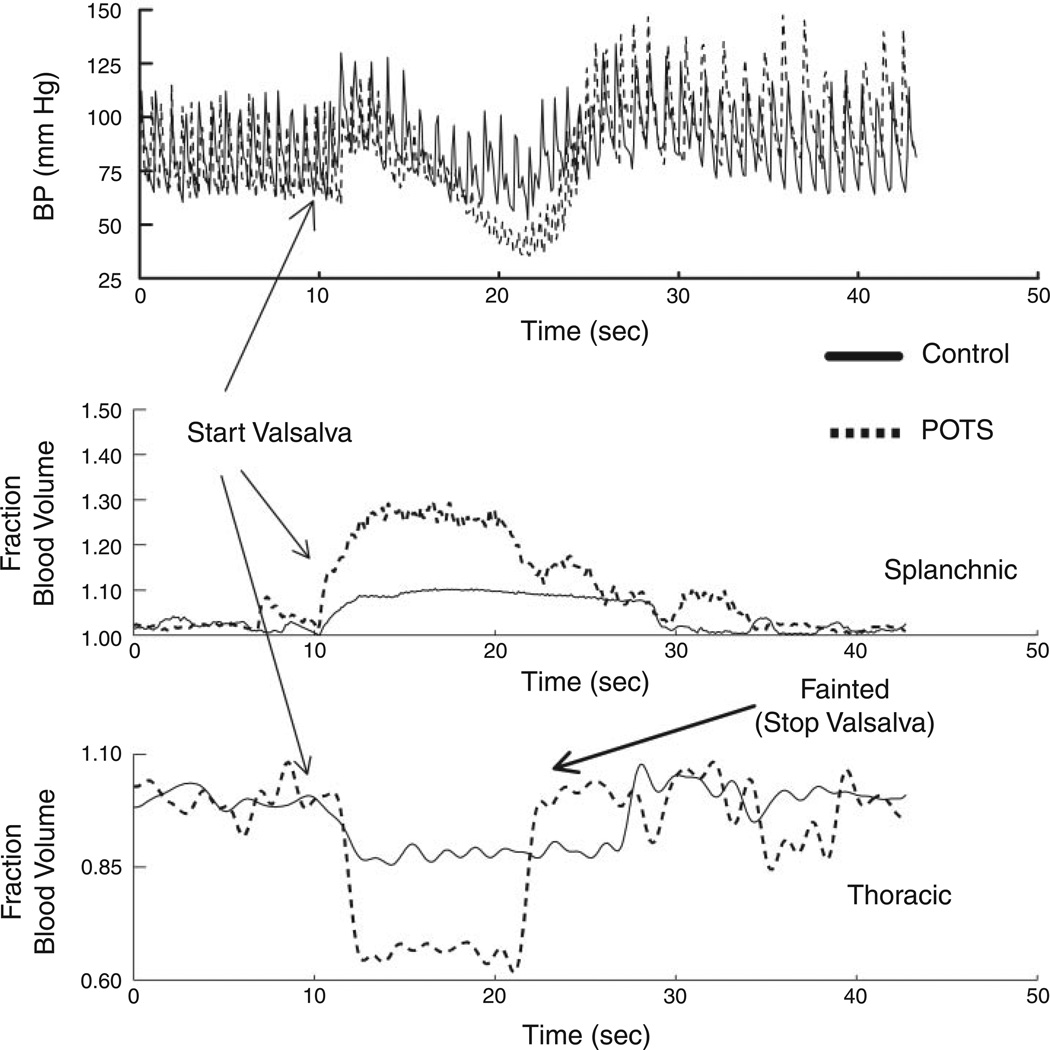Fig. 2.
Representative Valsalva maneuvers, one from a postural tachycardia syndrome (POTS) patient (dashed lines) and the other from a healthy volunteer control subject (solid lines). Top: arterial blood pressure (BP). Middle: fractional change in splanchnic blood volume. Bottom: fractional change in thoracic blood volume. There is a reciprocal relation between thoracic and splanchnic blood volume changes. A greater fall in arterial pressure is associated with greater changes in segmental volumes in POTS. The decrease in blood pressure in the POTS patient was sufficient to produce loss of consciousness, which terminated the maneuver.

